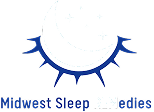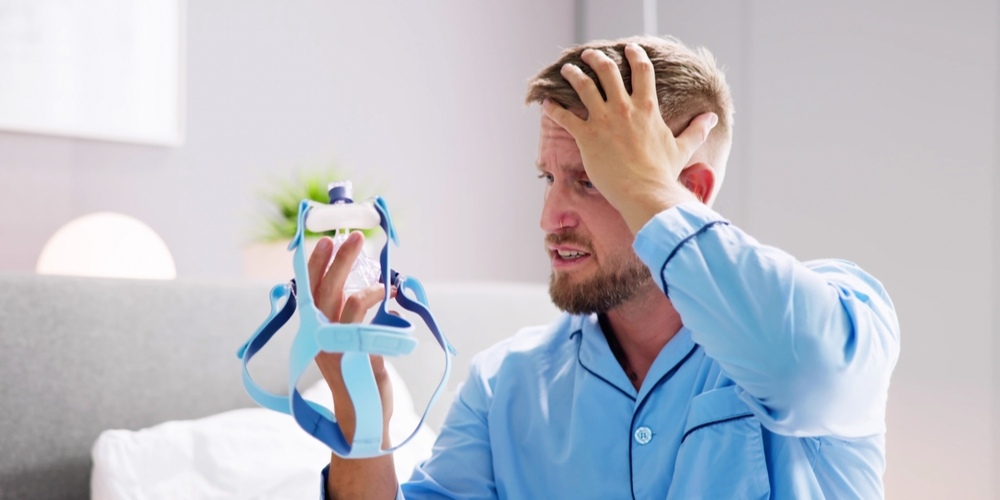Continuous Positive Airway Pressure (CPAP) therapy is considered the gold standard treatment for obstructive sleep apnea (OSA). For many, it significantly improves sleep quality, reduces daytime fatigue, and lowers the risk of serious health complications. However, CPAP therapy is not a one-size-fits-all solution. Despite its proven effectiveness, a significant number of patients struggle with using it consistently; or abandon it altogether. But why does CPAP therapy, which seems so promising, not work for everyone?
In this blog, we’ll delve into the common problems with CPAP therapy, highlighting the major causes of CPAP discomfort and CPAP side effects. Additionally, we will explore practical alternatives that might better suit individual needs. Understanding these challenges is the first step toward effective treatment and long-term success.
Key Takeaways:
- CPAP therapy is effective but often fails due to discomfort, poor fit, or lack of support.
- Side effects and psychological barriers can discourage consistent CPAP use.
- Personalized alternatives like oral appliances, lifestyle changes, or surgical options can offer better solutions for some patients.
The Learning Curve: Getting Used to CPAP Isn’t Easy
First and foremost, adapting to CPAP therapy can be a daunting process. While some patients acclimate quickly, many find it difficult to adjust to sleeping with a mask on their face and a machine humming nearby.
Claustrophobia and Anxiety
A common issue that emerges early on is the feeling of claustrophobia. The mask—especially full-face models—can trigger anxiety in some users. The idea of being “tethered” to a machine all night can be both physically and psychologically unsettling.
Difficulty Falling Asleep
Furthermore, it’s not unusual for patients to report that the CPAP machine actually disrupts their sleep rather than improves it in the beginning. The forced airflow, noise from the machine, or simply the awareness of wearing a mask can keep people awake.
Because of these issues, many patients give up on CPAP therapy before they’ve had a chance to truly benefit from it. So, why doesn’t CPAP work for these individuals? Often, it’s because they haven’t had the support or customization needed to ease into the treatment.
CPAP Discomfort: Fit and Pressure Problems
Another critical factor is CPAP discomfort, which typically stems from poor mask fit or inappropriate pressure settings.
Poor Mask Fit
Masks come in different shapes and sizes, but that doesn’t mean every mask fits every face. When a mask doesn’t seal properly, it can leak air, causing dry eyes, noise, and reduced effectiveness. Worse yet, a tight mask can leave red marks or cause facial pain.
Pressure Intolerance
Some patients also experience difficulty with the air pressure settings. If the pressure is too high, it can feel like the air is being forced down your throat, leading to discomfort or even a choking sensation. On the other hand, pressure that is too low may not be effective in keeping the airway open.
These issues highlight how crucial it is to work with a knowledgeable provider to fine-tune your CPAP settings. Without this guidance, the discomfort can easily become too much to bear.
Looking for a CPAP Alternative for Sleep Apnea?
Discover custom oral appliances designed to treat sleep apnea comfortably and effectively.
CPAP Side Effects: More Than Just an Inconvenience
Beyond discomfort, many users face annoying and sometimes serious CPAP side effects. Although often manageable, these can lead patients to abandon therapy altogether.
Nasal Congestion and Dryness
One of the most frequently reported problems is nasal congestion. The continuous airflow can dry out the nasal passages, causing stuffiness, nosebleeds, or sinus infections. Adding a heated humidifier to the CPAP system can help, but not everyone finds this sufficient.
Skin Irritation
Prolonged mask use can irritate the skin, leading to rashes or pressure sores, especially if the mask isn’t cleaned regularly or doesn’t fit well.
Aerophagia
This is a less commonly known but particularly unpleasant side effect. Aerophagia occurs when patients swallow air, leading to bloating, gas, and abdominal discomfort. It’s often a result of excessive pressure or poor mask fit.
Noise Disruption
Although modern CPAP machines are quieter than ever, they still produce some noise. For light sleepers or their partners, even a gentle hum can be disruptive.
Clearly, these side effects contribute to why CPAP doesn’t work for everyone. While many issues can be resolved with proper adjustment and support, not all patients are willing or able to endure this trial-and-error process.
Psychological Barriers and Lifestyle Challenges
In addition to physical discomfort and side effects, psychological and lifestyle factors play a significant role in the failure of CPAP therapy.
Embarrassment and Stigma
Some patients feel embarrassed about using a CPAP machine, especially when sharing a bed or traveling. This stigma can lead to inconsistent use or avoidance altogether.
Inconsistent Sleep Schedules
Individuals who travel frequently or have irregular sleep patterns may find it hard to use the CPAP machine consistently. Lugging equipment around or setting it up in unfamiliar environments can be too cumbersome.
Lack of Support
Perhaps one of the most underrated reasons why CPAP doesn’t work is the lack of follow-up and support. Many patients are simply handed a machine and left to figure things out on their own. Without proper education and troubleshooting, even minor issues can snowball into deal-breakers.
When CPAP Fails: Exploring Alternatives
Fortunately, CPAP is not the only treatment available for obstructive sleep apnea. If you’re struggling with the problems with CPAP therapy, it’s worth exploring other options. Here are some popular and effective alternatives:
1. Oral Appliance Therapy
Custom-fitted by a dentist, oral appliances reposition the jaw and tongue to keep the airway open. They are less invasive, easier to travel with, and more comfortable for many patients.
2. Positional Therapy
Some people only experience sleep apnea when lying on their backs. In such cases, positional therapy, which trains you to sleep on your side, can be highly effective. Moreover, special pillows and wearable devices can help maintain side-sleeping positions.
3. Weight Loss and Lifestyle Changes
While not a quick fix, losing weight can significantly reduce or even eliminate sleep apnea in some individuals. Avoiding alcohol, quitting smoking, and maintaining good sleep hygiene can also make a meaningful difference.
4. Surgery
For severe cases or when anatomical issues are present (like enlarged tonsils or deviated septum), surgical options such as Uvulopalatopharyngoplasty (UPPP) or Inspire (a surgically implanted nerve stimulator) may be considered.
5. BiPAP or AutoPAP Machines
If pressure intolerance is an issue, a BiPAP (Bilevel Positive Airway Pressure) or AutoPAP (automatic pressure adjusting CPAP) machine might be more comfortable and effective. These alternatives adjust the pressure more naturally and can reduce CPAP side effects.
6. Personalizing Treatment: The Key to Success
Overall, it’s essential to understand that no treatment is universally effective. The reasons why CPAP doesn’t work for some people are often highly individual. That’s why personalized care is so important.
Work with a Sleep Specialist
Instead of giving up after a frustrating experience, consult a sleep specialist. They can review your sleep study, reassess your diagnosis, and help tailor a solution to your unique needs.
Give it Time
In any case, adapting to any new medical treatment takes time. Often, what feels unbearable at first becomes manageable, or even second nature—with the right adjustments and a little patience.
Final Thoughts
While CPAP therapy has transformed the lives of millions, it’s not without its challenges. From CPAP discomfort and side effects to psychological barriers and logistical hassles, there are many reasons why CPAP doesn’t work for everyone. However, giving up on treatment entirely is rarely the best option. By identifying the specific problems with CPAP therapy and exploring alternatives like oral appliances, lifestyle changes, or other medical devices, patients can find a solution that works for them.
If CPAP isn’t working for you, don’t suffer in silence. Speak to a qualified provider, advocate for your comfort, and explore the many options available. Better sleep and better health are still within reach.
Have Questions About Disturbed Sleep?
Get in touch with us and learn more about our sleep services and sleep solutions and how we can help you sleep better.




